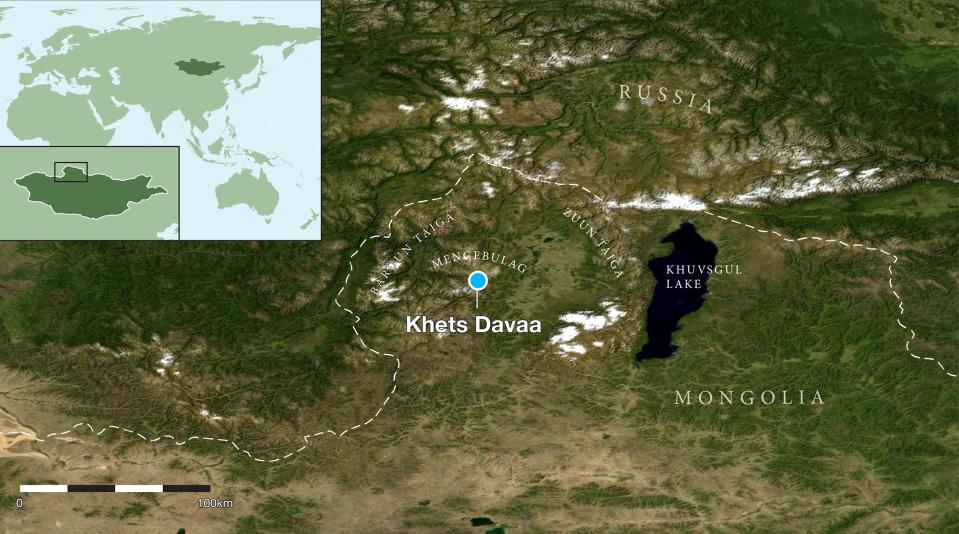Earth’s patches of ‘eternal’ ice are melting for the first time, threatening herds of reindeer

Global climate change is leading to so-called ‘eternal ice’ in Mongolia to melt for the first time in memory.
Rising temperatures mean areas of ice that are permanently frozen - dubbed ‘munkh mus’ or ‘eternal ice’ by its native people - in the tundra in Northern Mongolia are melting fast.
The changes are threatening to wipe out herds of reindeer as well as risking those who tend for them, a new study has suggested.

The study by the Max Planck Institute in Germany and the University of Colorado-Boulder in the United States found that the patches of ‘eternal ice’ are used by the native Tsaatan people - who rely on reindeer-herding - to cool the animals down, as well as to provide fresh water for themselves.
Scientists interviewed eight Tsaatan families, who live along the Russian border in Mongolia’s Khuvsgul province, and conducted a huge archaeological survey.
READ MORE
Extremely rare and beautiful white reindeer spotted by photographer in Sweden
Why the other reindeer probably weren’t laughing at Rudolph’s red nose
The Tsaatan explained how many of the ‘eternal’ ice patches had melted for the first time in memory between 2016 and 2018, leading to increased sickness and death among their reindeer herds.
Archaeologist William Taylor, who led the research published in the journal PLOS ONE, said: “What’s unique about reindeer herding is how closely it’s tied to this very fragile thing - the ice.

He added: “This study shows us that global climate change is an urgent threat in Inner Asia.
“Melting ice is threatening both reindeer herding as a way of life, and the region’s cultural heritage.”
The scientists warned that as Mongolia continues to warm at a higher rate than the global average, its effects on reindeer herding and its cultural heritage is at extreme risk.
"The Tsaatan are literally at the front lines of climate change,” Dr Taylor said. “These are folks that contributed nothing to the problem that we find ourselves in globally, but they're the ones paying the first price."

The patches of ice also contain some of the area’s only archaeological evidence of the history of reindeer herding, scientists have warned.
Researchers carried out an archaeological survey of 11 melting ice patches and found several artefacts that they have warned could vanish forever as the ice melts.
Study co-leader Julia Clark, an archaeologist at Flinders University, said: “Archaeology is non-renewable. Once the ice has melted and these artifacts are gone, we can never get them back.”

 Yahoo Finance
Yahoo Finance 
